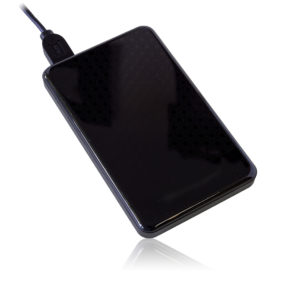 External hard drives (HDDs) are commonly used for backup and for additional storage. They provide more control over data than cloud storage services, and they’re significantly less expensive than external solid-state drives (SSD).
External hard drives (HDDs) are commonly used for backup and for additional storage. They provide more control over data than cloud storage services, and they’re significantly less expensive than external solid-state drives (SSD).
But while external HDDs are inexpensive and reliable, they’re not perfect. If you need to recover data from a USB hard drive, here’s a comprehensive guide to help you choose a qualified provider.
First, a quick plug: Datarecovery.com provides free evaluations for all external hard drive data recovery cases. All services are supported with our no data, no charge guarantee: If we’re unable to recover the files you need, there’s no charge for the attempt.
To learn more, call 1-800-237-4200 or schedule a risk-free evaluation online.
External hard drive data recovery services fall into two categories.
If you’ve lost data from an external hard drive, take a deep breath. At our laboratories, the vast majority of cases end with a full recovery — and a sizable percentage end with a partial recovery.
Unless you’ve wiped your hard drive with secure file deletion software, your chances of permanent data loss are low. However, you should immediately turn off the external hard drive.
Most data loss scenarios fall into one of the following categories (a small percentage fall into both categories):
- Physical Hard Drive Failure occurs when the HDD stops working due to a component failure or an electronic issue. The damaged parts will need to be repaired or replaced.
- Logical Data Loss occurs when files become unreadable due to malware infection, accidental deletion, or user error.
For external hard drives, physical failures are more common, but not because of the quality of the hardware. Compared to internal drives, external HDDs are more likely to incur damage due to mishandling or poor environmental conditions.
The most common causes of data loss for external hard drives include:
- Physical damage from dropping the drive.
- Damage to the external HDD’s electronics.
- Damaged connection ports (USB/Firewire).
- Read/write head crashes (not caused by direct physical damage).
- Accidental file deletion.
- Ransomware infection.
- Flood damage or liquid exposure.
Logical issues can be treated with software, though we strongly recommend working with an experienced data recovery provider regardless of the data loss scenario. Learn why Datarecovery.com does not recommend data recovery software for home use.
To physically repair external hard drives, data recovery engineers need specialized equipment.
Put simply, your local computer repair shop will not have the necessary tools to perform data recovery on a damaged external hard drive. Essential data recovery tools include:
- Certified clean rooms, which allow engineers to repair or replace internal HDD components without risking contamination. Learn more about data recovery clean room technology.
- Firmware repair tools, which enable engineers to change the instructions that hard drives use to operate. Learn more about firmware and microcode repair technology.
- Hardware donor libraries, which provide engineers with the parts needed for common hard drive repairs. See photos of Datarecovery.com’s Hard Drive Parts Inventory.
You’ll typically have one chance to recover data from a damaged drive, so it’s important to vet data recovery providers carefully. For additional tips, read: Finding the Best Data Recovery Company.
Take these steps to improve your chances of successful external HDD data recovery.
Whether you trust your external drive to Datarecovery.com or another provider, we want to help you maximize your chances of a successful case result. The bottom line: If your data is irreplaceable, work with a professional data recovery provider. Do not attempt to recover the data on your own.
Take the following steps:
- Turn the drive off and keep it powered off. Do not remove the drive from its external enclosure unless you’re absolutely sure that the internal HDD is functional. If you’re not sure whether that’s the case, get a free evaluation from a reputable data recovery provider.
- Make a list of any symptoms that preceded the failure. Include unusual noises (such as clicking or whirring sounds), error messages, and any other performance issues that seem relevant along with basic info about the drive’s file system (if known) and the names of important files.
- Find a data recovery provider with an established track record. Read testimonials and use community resources like Reddit to evaluate your options (read one of our engineers’ Reddit AskMeAnything here).
- If you need to ship your external hard drive, package it carefully. Use at least 3-5 inches of bubble wrap and ensure that the drive cannot move in its packaging.
Datarecovery.com offers a no data, no charge policy for all hard drive failure scenarios, which provides peace of mind as your case progresses. Each of our full-service laboratories is outfitted with industry-leading technology to ensure high success rates, low recovery costs, and fast turnaround times.
Call us at 1.800.237.4200 to speak with a data recovery expert or submit a case online.




